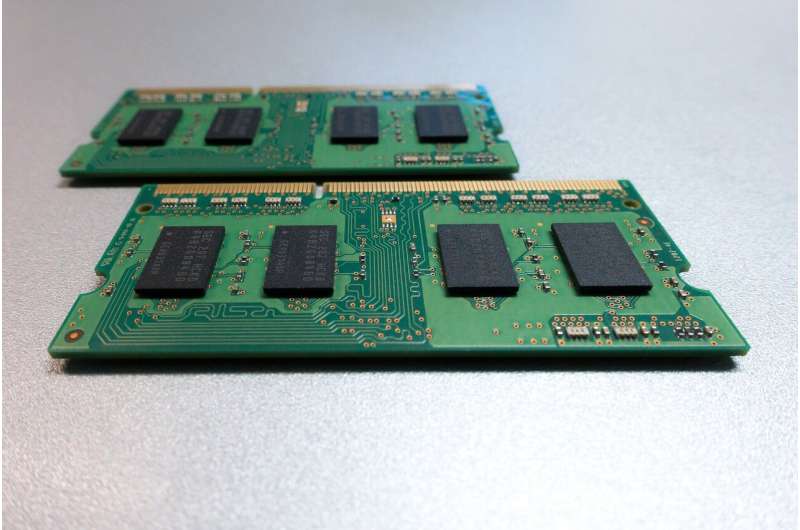Manipulating tiny skyrmions with small electric currents

A research group from the RIKEN Center for Emergent Matter Science has managed to manipulate and track the movement of individual magnetic vortices called skyrmions, which have been touted as strong candidates to act as information carriers in next-generation storage devices and as synapses for neuromorphic computing. They were able to move and measure skyrmions of 80 nanometers in size, using a small electric current 1000 times weaker than those used for drives of magnetic domain walls in racetrack memory.
This work could be key to the creation of a new type of device called a "skyrmion-based racetrack" memory, which uses topological electron-spin textures, allowing much greater energy efficiency than conventional electronic devices. Essentially, this type of memory involves using currents of spin-aligned electricity to put a magnetic domain past magnetic read/write heads—information carriers which act as either ones or zeroes. In the case of skyrmions, the existence and non-existence of a skyrmion can serve as a bit of information. What has proven difficult, however, is effectively measuring skyrmions without using high currents of electricity.
In the current work, published in Science Advances, the group, led by Xiuzhen Yu of the RIKEN Center for Emergent Matter Science, worked with a thin film of iron germanide, a type of material known as a helimagnet, making it easier to manipulate the small magnetic vortices called skyrmions. Importantly, the film used for the study was developed with a notch that allowed the spin current to be localized in a specific area near the corner of the notch.
Normally, skyrmions emerge as part of a structure called a skyrmion crystal, which incorporates a number of vortices and hence is quite difficult to move. An important goal of research has been to isolate and manipulate individual skyrmions, making it easier to move them, but this is a tricky process. By experimenting with the directional currents, and recording the results with sequential Lorentz transmission electron microscopy, the group found a point where they could isolate individual skyrmions and record how they moved based on known processes such as the topological Hall effect.
According to Xiuzhen Yu, who led the research group, "Through this work we have demonstrated that it is possible to manipulate and track individual skyrmions and its crystal using a relatively low electric current, and we hope that this will help the development of more energy efficient racetrack memory as well as neuromorphic computing. We realize that there are limitations in terms of how much the skyrmions can be moved, and plan to work, by developing a bilayer system that can host combined skyrmions, to further improve the device to enable it to be put into practical application."
More information: Motion tracking of 80-nm-size skyrmions upon directional current injections. Science Advances (2020). DOI: 10.1126/sciadvaaz9744




















